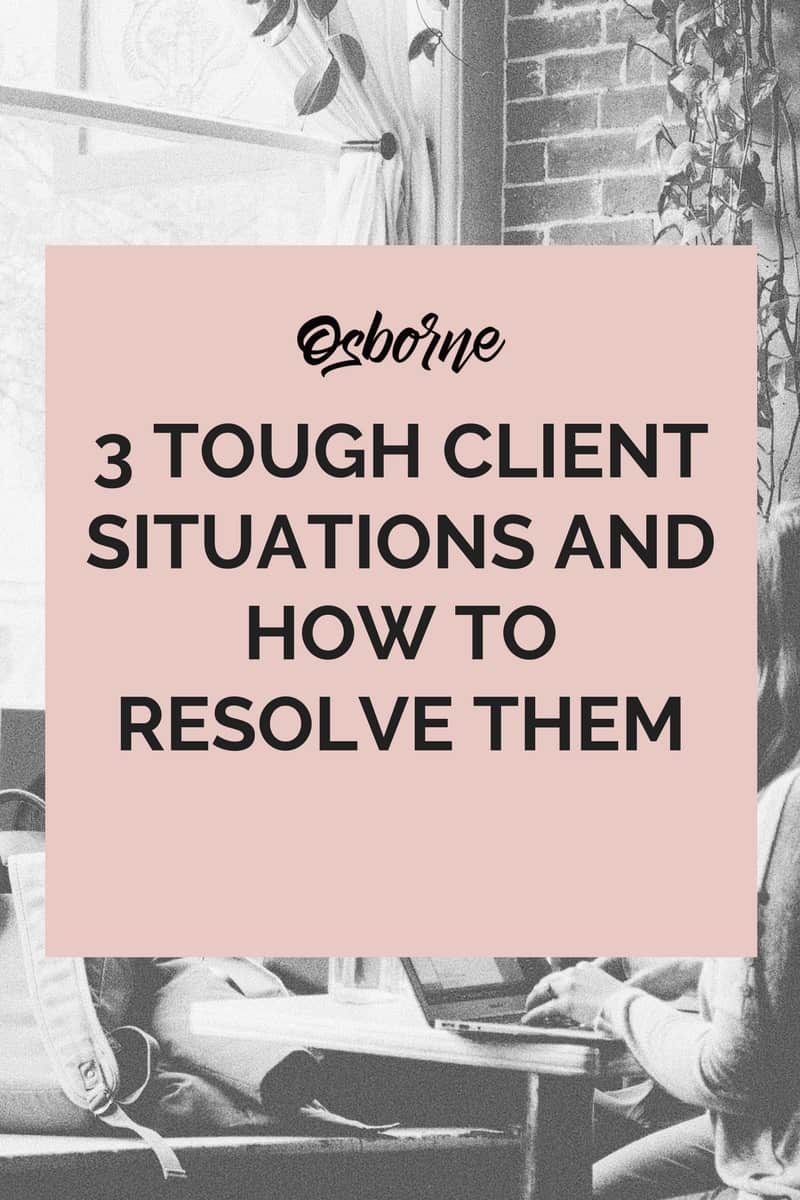3 tough client situations and how to solve them

There are many circumstances in which you have to bro down and get real with your clients. The most challenging times are when you aren’t seeing eye to eye, and there’s no light at the end of the tunnel. In my experience, these conversations can either make it very apparent that you aren’t a good fit, or they can solidify your relationship and make things way better than you ever imagined.
Here are 3 examples of situations I have seen first hand, and ways to solve them.
When the client doesn’t want to pay
Do we dine and dash? Or get a haircut and just walk out!? Um, no. I think that’s why this instance is so tough to swallow. It’s a bummer to be faced with what should be such an open-and-shut situation. “I do the work, and you pay me.” Right? Sometimes, wrong. The shittiest thing about this is that if you’ve done things right, there can be friendships at stake, as well. Here’s the rundown of how to deal with this when and if it arises.
Easy does it – These are never simple situations. They are super challenging and usually have many angles and points of view involved. The first thing to do is to ease on in and take a look from both sides. What can you see that went wrong. How could you have improved? What can you see that they did?
Gather info – This is when all of the email filing comes in real handy. Search through the emails that pertain to the dispute and gather the info so that you have it on hand to back up your argument when the back and forth starts going.
Listen – Make a time for a call or a face to face and hash it out. Listen to their side—the why, the who and the WTF. But come prepared with yours as well—and be sure you show up with complete and correct info.
Step away – This is when you assess how things went. Is there a spirit of collaboration in solving the issue and getting things settled up? Or do you feel that there might not be a solution at hand and it’s better to part ways?
The tough stuff – It’s shitty, but sometimes you just can’t get things figured out. The most effective way to part ways is as follows: in-between the time of your last meeting and the time talk of lawyers starts coming up in emails, you send off one more invoice that offers the rest of the work and files that they need to move on with a requirement of payment. Keep it simple, keep it direct, keep it non-emotional. If things move into lawyer-ville, then at least you know you tried and you have the documentation of the effort, as well.
When the client is creepin’ on the scope
For instance: you make like 82 sketches of a logo, and they still just don’t quite know what they wanna see … Fuck. The best way to avoid this is rewinding time, making the scope super clear and sticking to it. Check it.
At the jump, make sure you write scopes out in a super detailed way, and that they sign an agreement before beginning the project. This protects you from 55 rounds and day drinking while crying. When they stray from the scope, you can refer back to it and even *gasp* re-scope due to scope creep. It empowers you.
If you don’t have this luxury, then send the next round of work with a come to JEEZUS:
“Here is round 25! Just to let you know, we have reached our scope limit. I predict we will need X amount of rounds in order to take this thing to the finish line. Let’s chat on if you approve the pricing in order to do so. Can’t wait to see this thing come to life.”
Simple, to the point, and they realize they are off the reservation.
When the client thinks your estimate is too high
Ah yes, the infamous and dreaded moment when you realize that they don’t comprehend the value of what you are offering. Dewd. I always say to my teams, “Can they do what you do?” Um, NO. Then fuck that.
2 things that can help you trudge through this to the other side.
• Do a deep dive into scope – The more detailed, the better. Don’t put client-facing prices to it, but do put every effing line item and team member on that bad boy. It all adds up, and it all matters. Represent this on your SOW when you send it to them with pricing as a grand total. It will help them to see what they’re getting.
• Range pricing – When you’re dealing with a new client or a high-touch one that may not see your value, this is a great tool. They will always look at the lowest number as the estimate. Meanwhile, you have put your base cost at the lowest and added 15% to get the high. You happy camper, you. I usually end up charging somewhere in the middle for value price and everyone is happy at the end of the day.
I hope this helps you to wiggle out of the tough spots we can get in with clients. Ultimately, you want to work through this stuff and keep them!



